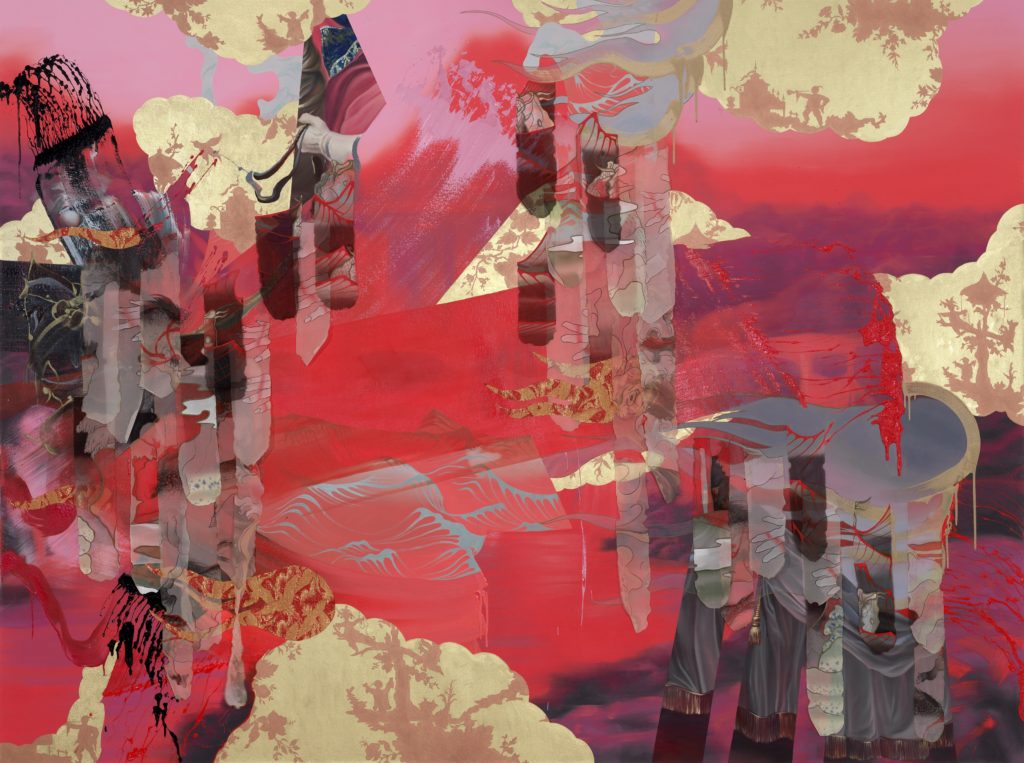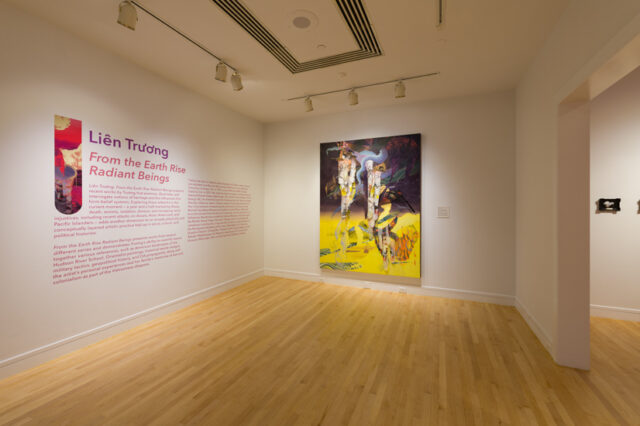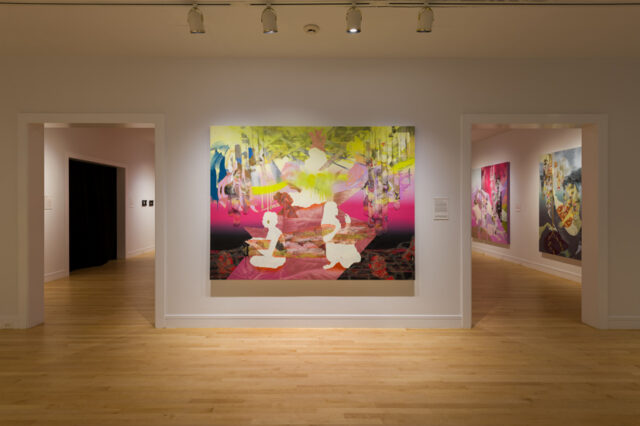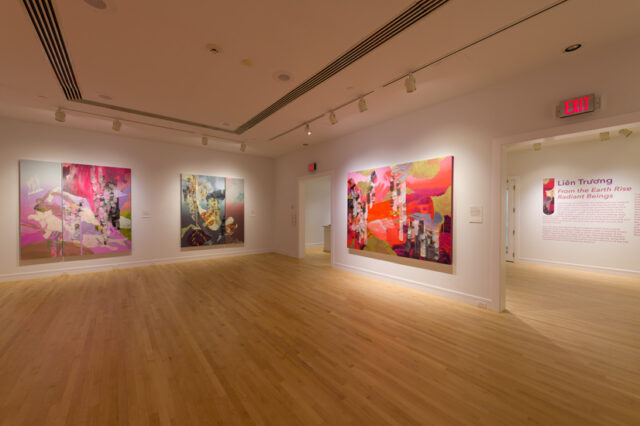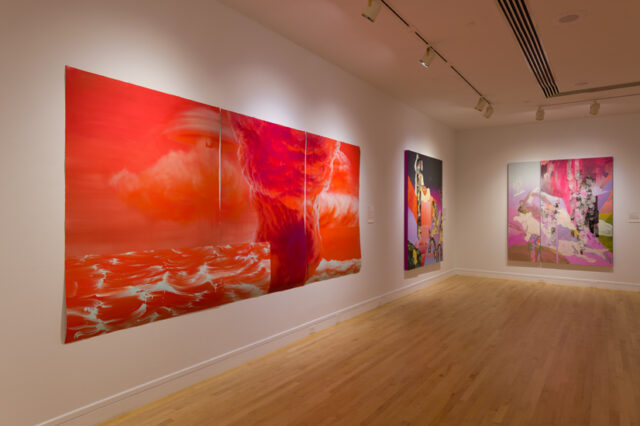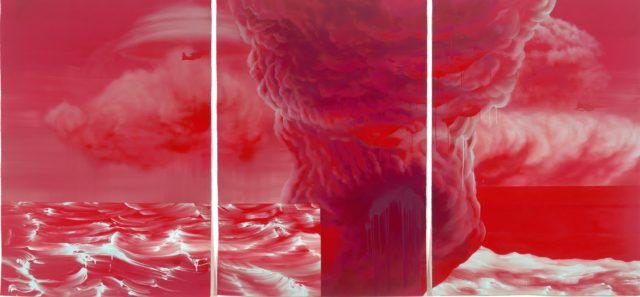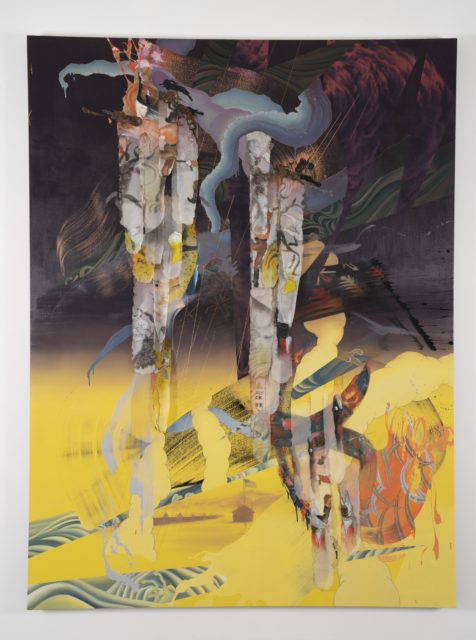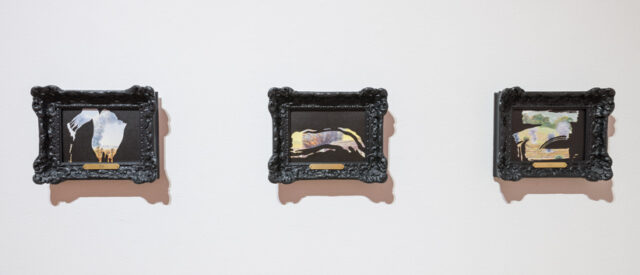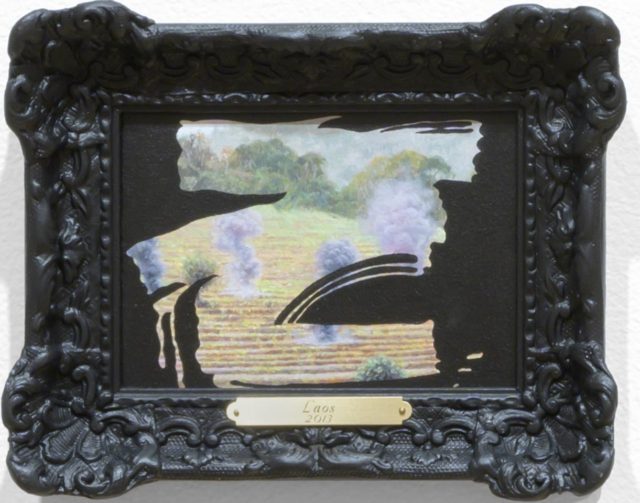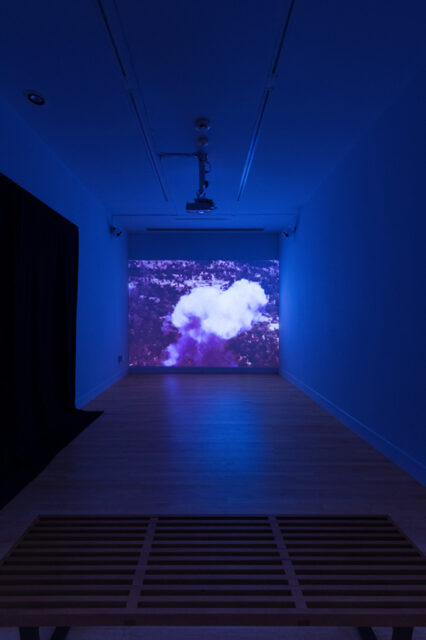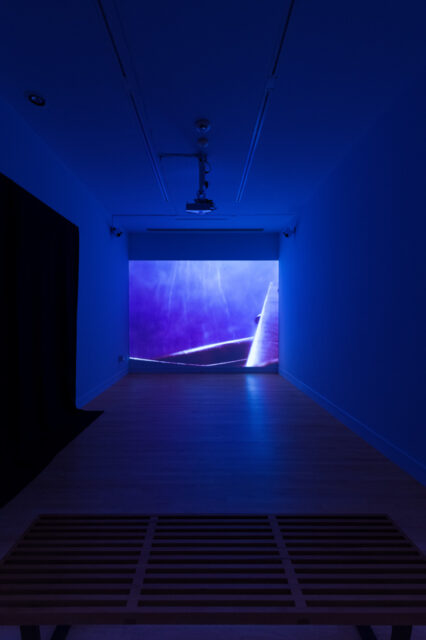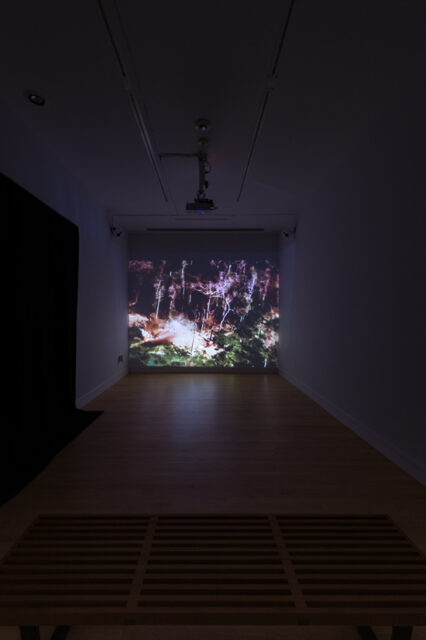Liên Trương
From the Earth Rise Radiant Beings
Van Every Gallery
On View: August 23, 2021— October 03, 2021
Opening Reception: September 9, 2021, 7:00 pm— 8:30 pm
Related Programs & Events
Liên Trương: Artist Talk
September 9, 2021, 6:00 pm—7:00 pm
Liên Trương: From the Earth Rise Radiant Beings presents recent works by Trương that examine, illuminate, and interrogate notions of heritage and the influences that form belief systems. Exploring these artworks in the current moment—a year and a half marked by illness, death, anxiety, isolation, division, and increasing racial injustices, including recent attacks on Asians, Asian Americans, and Pacific Islanders—adds another dimension to an already physically and conceptually layered artistic practice tied up in social, cultural, and political histories.
The exhibition presents works from several different series and demonstrates Trương’s ability to expertly weave together various references. The Sky is Not Sacred is a two-part collaboration between Hồng-An Trương and Liên Trương. In the large-scale oil triptych on Arches paper, the red-hued sky, storm clouds, and choppy sea may bring an old adage to mind: “Red sky at night, sailors’ delight; red sky in morning, sailors take warning.” Predating meteorology, the saying is just one of many rhymes, stories, and axioms that combines folklore and science in order to make sense of weather phenomena. A red sky in the morning often indicates high water content in the atmosphere, thus, rain ahead.
The artists are not interested in meteorology per se, but rather in the aesthetic theories and ideologies communicated through the genre of landscape painting. In the related video of the same title, the artists examine clouds and stormy weather in various ways, including as a device of British painter John Constable, known for his extensive study of clouds and the sky, which he believed to be “the chief Organ of sentiment” present across the genre of landscape painting. The Sky is Not Sacred also upends the notion of the sky as a divine space. The two artists instead position the sky as a place of potential disaster and war. In particular, the work highlights weather control techniques used during the American War in Vietnam between March 20, 1967, and July 5, 1972. The United States Air Force used cloud-seeding technology to extend the monsoon season to “make mud, not war,” impeding the transport of North Vietnamese troops and supplies.
Trương’s miniature oil painting series, Translatio Imperii, further positions the sky as a place of war and terror. The title refers to a concept dating from the Middle Ages that espouses a linear succession of dominant civilizations whose power and political legitimacy can be traced back to classical antiquity.
Mounted in ornate vintage frames, the paintings feature idyllic landscapes reminiscent of works by Hudson River School painters who found inspiration in the expansive, untamed American landscape of the mid-19th century. Artists like Thomas Cole and Albert Bierstadt portrayed nature as both awe-inspiring and superable. The title of the series inextricably links the Hudson River School painters to the concept of Manifest Destiny, but Trương’s subject matter—the sites of U.S. military bombings—pushes beyond the confines of American borders and speaks to wider U.S. imperialist strategies. Brass title plates denote specific countries and years of the bombings.
Trương’s landscapes are revealed within painted gestures taken directly from Roy Lichtenstein’s Brushstrokes series, which acknowledges another influential art movement, American Abstract Expressionism. That movement, which came to prominence nearly one hundred years after the Hudson River School, was endorsed by the Central Intelligence Agency during the Cold War in direct opposition to Soviet-sponsored Socialist Realism, thereby promoting American modern art as evidence of U.S. cultural superiority. The deliberate small scale of these paintings represents a questioning both the Western art historical canon to U.S. military dominance.
Trương aims to create a type of Asian Futurism through narratives that simultaneously refer to, reject, and reframe oppressive epistemologies. In her earlier paintings, Trương focused more on landscape, gesture, and materiality, while more recent works incorporate representations of the body.
Both of Trương’s parents spent their youth in Vietnam, under the rule of French Indochina. The landscape in According to the Spectre of Blood and Water is of Đà Lạt, Trương’s mother’s birthplace. Trương’s process—fracturing, combining, and layering the landscape with a mix of canonical Western and Asian paintings techniques, antique Japanese fabrics, painted silk, and, in this particular work, painting of French Monarchs—ties in with her concept, especially the complexity and confusion of identity and heritage, further complicated by war and colonization.[1] Juxtaposing Western and Asian painting techniques, materials, and philosophies also questions the hierarchy of the former over the latter within the art historical canon.
Trương’s incorporation of silk and historical textile designs highlights the worldwide textile trade, a centuries-old, entangled narrative of colonization, migration, and power. But her interest in utilizing textiles, particularly Vietnamese silks such as the kind treasured, worn, and collected by her mother, aunts, and cousins, is also a powerful personal rejection of Orientalist ideologies associated with these materials, particularly those of a sexualized or fetishized nature. Trương notes, “We need to consider that skin, cloth, and ornament can only become interrelated metaphors for personhood when actual personhood is ignored and invisible.”
From the Earth Rise Radiant Beings, from Trương’s newest series of the same name, features landscape imagery of the Philippines. Trương’s focus on the island references the various strategies and acts—moral, ideological, military, and legal—employed by the United States to justify expansion and imperialism. The Philippines became a U.S. territory after the Spanish-American War in 1898. Trương sourced imagery of the locale during World War II, during Japanese occupation and just a few years before independence, to speak to the widespread influence of American policies as related to colonialism, immigration, and citizenship.[2]
While landscape is still a key element of her new works, Trương has shifted her focus to include more figurative elements and, in some cases, depictions of specific people. For example, in From the Earth Rise Radiant Beings, Trương includes the likeness of Teresa Magbanua y Ferraris, a resistance fighter who led troops into battle against the country’s successive colonizers: Spain, the United States, and Japan. Other figures are sourced from Orientalist paintings in which women in particular were portrayed as submissive and sexualized. Painted as silhouettes in a pale yellow hue, Trương’s figures, “born from the violent histories descended from Orientalist ideologies, repudiate their origins…transcending geopolitical and generational boundaries to create narratives of resistance and autonomy.”
All of Trương’s works—well-researched, complex narratives that connect a range of influences from historical and military references, textile designs, art history, Asian and Western painting practices, and personal narrative and experiences, speak to perceived representations of culture and the complications of identity, particularly in relationship to colonialism, imperialism, and war. For works that, at heart, are really about transnational and generational trauma and violence, they are remarkably optimistic. Trương helps us imagine new worlds where from our violent past, strength, resistance, autonomy, and love spring forth and help propel us forward.
Trương was born in Vietnam and emigrated to California when she was just eighteen months old. She earned a BFA from Humboldt State University in Arcata, CA, in 1999, and an MFA from Mills College, Oakland, CA, in 2001. Her work has been included in exhibitions at the National Portrait Gallery, Washington, DC; North Carolina Museum of Art, Raleigh, NC; the National Centre for Contemporary Arts, Moscow, Russia; Nha San Collective, Hanoi, Vietnam; and Art Hong Kong; among others. She is the recipient of several awards and honors, including the Joan Mitchell Foundation Painters and Sculptors Grant, Whitton Fellowship from the Institute from the Arts and Humanities, and the NC Arts Council Fellowship. Residencies include the Oakland Museum of California and the Marble House Project, Vermont. Truong’s work is in several public collections, including the Linda Lee Alter Collection of Art by Women at the Pennsylvania Academy of Fine Arts, Philadelphia; DC Collection, Disaphol Chansiri, Chiang Mai, Thailand; North Carolina Museum of Art, Raleigh; Weatherspoon Art Museum, Greensboro, NC; Cameron Art Museum, Wilmington, NC; and the Post Vidai Collection and Royal Melbourne Institute of Technology, Vietnam.
Hear Lien’s artist talk here.
Visit the Virtual Tour here.
Read the full label text here.
View the exhibition brochure below.
This exhibition and related programs are made possible by the support of the Herb Jackson and Laura Grosch Gallery Endowment and Davidson College Friends of the Arts.
[1] Trương has incorporated fractured paintings of Napoleon III, who made the decision for France to invade Vietnam in 1857, which resulted in more than six decades of French rule over Vietnam.
[2] In developing the Nuremberg Laws, Nazi Germany looked to American tactics such as Jim Crow and the Immigration Act of 1924, which imposed national quotas and barred most Asian people from entering the U.S. Indigenous groups and Filipinos, among others, were designated as non-citizens, even though they were from the U.S. or its territories. Passed in 1935 by the Nazi Party, the Nuremberg Laws stripped citizenship from Germans with three or more Jewish grandparents and reclassified them as “subjects” of the state, among other things.

